Grow Basil from Seed: Your Guide to a Flavorful, Homegrown Herb Garden
Growing basil from seed might seem daunting, but I promise you, it’s easier than you think! This article is your passport to a vibrant, fragrant basil patch right in your own backyard or even on your windowsill. Forget those sad, limp supermarket bunches; I’m going to share my tried-and-true Grow Basil from Seed techniques, transforming you from a basil-buyer to a basil-grower in no time.
For centuries, basil has held a special place in cultures around the world, revered not only for its culinary uses but also for its symbolic meaning. From ancient Greece, where it was associated with love and prosperity, to its prominent role in Italian cuisine, basil’s journey is as rich and flavorful as the herb itself. But you don’t need to be a culinary historian to appreciate the joy of harvesting fresh, homegrown basil.
Why Grow Your Own Basil?
There’s simply nothing quite like the taste of freshly picked basil. Store-bought basil often lacks the vibrant flavor and aroma of homegrown varieties. Plus, growing basil from seed gives you complete control over the quality and quantity of your harvest. You can choose from a wide array of basil types, experimenting with different flavors and colors to suit your culinary creations. Imagine adding your own homegrown basil to your pasta dishes, pizzas, or summer salads – the satisfaction is unparalleled!
This guide will walk you through every step of the process, from selecting the right seeds and starting them indoors to transplanting them outdoors and caring for your flourishing basil plants. Get ready to unlock the secrets of growing basil from seed and experience the rewarding journey of cultivating your own delicious herb garden. Let’s get started!
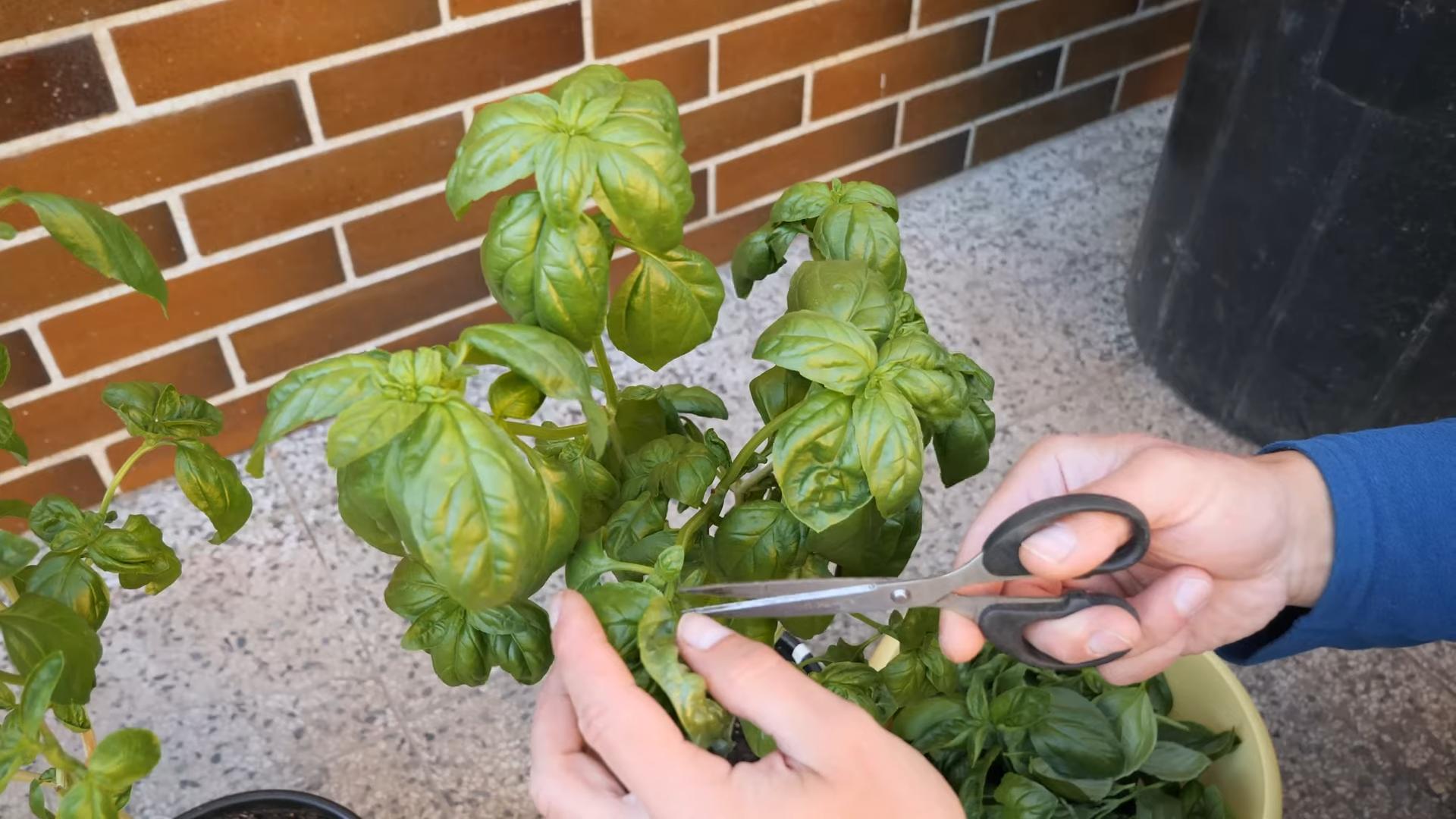
Growing Basil from Seed: A Step-by-Step Guide
I love fresh basil! There’s nothing quite like the taste of homegrown basil in your pasta sauce or pesto. And the best part? It’s surprisingly easy to grow from seed, even if you’ve never gardened before. This guide will walk you through the entire process, from seed to delicious leaves.
Phase 1: Preparing for Planting
- Choose your basil variety: There are many types of basil, each with its own unique flavor profile. Genovese basil is a classic choice, known for its sweet and slightly peppery taste. Sweet basil is another popular option. Consider what you’ll use your basil for when making your selection. Do some research to find the perfect variety for you!
- Gather your supplies: You’ll need basil seeds, seed starting mix (not regular garden soil!), small pots or seed trays, a watering can with a fine rose, a humidity dome (optional but recommended), and a sunny location.
- Select your containers: Small pots (around 3-4 inches in diameter) or seed trays with individual cells work best for starting basil seeds. Make sure they have drainage holes to prevent soggy soil.
- Prepare the seed starting mix: Fill your pots or seed trays with seed starting mix. This mix is specifically formulated for seedlings and provides excellent drainage and aeration. Don’t use garden soil, as it can be too dense and compact for delicate seedlings.
Phase 2: Sowing the Seeds
- Moisten the seed starting mix: Gently water the seed starting mix until it’s evenly moist but not soggy. You should be able to squeeze a small handful and have it hold its shape without dripping water.
- Sow the seeds: Basil seeds are tiny! Plant them about 1/4 inch deep and 1 inch apart. If using a seed tray, plant one or two seeds per cell. Don’t bury them too deep, or they may not germinate.
- Cover the seeds: Lightly cover the seeds with a thin layer of seed starting mix. You can gently press the mix down to ensure good seed-to-soil contact.
- Water gently: Use a fine-rose watering can to gently water the seeds. Avoid dislodging them. A gentle spray is best.
- Cover with a humidity dome (optional): A humidity dome helps to maintain consistent moisture and warmth, which are crucial for germination. If you don’t have a dome, you can cover the pot or tray with a clear plastic bag, making sure to leave some space for air circulation.
Phase 3: Germination and Seedling Care
- Place in a warm location: Basil seeds germinate best at temperatures between 70-80°F (21-27°C). Find a warm, sunny spot, ideally with indirect sunlight. Direct sunlight can be too intense for seedlings.
- Maintain moisture: Keep the seed starting mix consistently moist but not waterlogged. Check the moisture level daily and water as needed. Avoid overwatering, which can lead to damping off (a fungal disease that kills seedlings).
- Monitor for germination: Germination usually takes 7-14 days, depending on the variety and temperature. Once you see seedlings emerge, remove the humidity dome or plastic bag gradually to allow for better air circulation.
- Provide adequate light: As the seedlings grow, they’ll need more light. If you’re growing them indoors, consider using a grow light to supplement natural sunlight, especially during winter months. Aim for at least 6-8 hours of light per day.
- Thin seedlings (if necessary): If you planted multiple seeds per cell or pot and they’re crowded, thin them out to one strong seedling per cell or pot. Gently pull out the weaker seedlings, being careful not to disturb the roots of the remaining plants.
Phase 4: Transplanting and Ongoing Care
- Hardening off: Before transplanting your basil seedlings outdoors, you need to gradually acclimate them to the outdoor environment. This process, called hardening off, reduces transplant shock. Start by placing your seedlings outdoors for a few hours each day, gradually increasing the exposure time over several days.
- Transplant to larger pots or garden: Once your seedlings have several sets of true leaves (the leaves that appear after the cotyledons, or seed leaves), they’re ready to be transplanted. Choose larger pots (at least 6 inches in diameter) or prepare a spot in your garden with well-drained soil. Space plants about 12-18 inches apart.
- Water regularly: Basil needs consistent moisture, especially during hot and dry weather. Water deeply and regularly, ensuring the soil remains moist but not soggy. Mulching around the plants can help retain moisture.
- Fertilize (optional): While not strictly necessary, you can fertilize your basil plants every few weeks with a balanced liquid fertilizer to promote vigorous growth. Follow the instructions on the fertilizer label.
- Pinch back the flowers: Basil plants will eventually produce flowers. Pinching off the flower buds encourages bushier growth and prevents the plant from diverting energy to seed production, resulting in more leaves for harvesting.
- Harvest regularly: Harvest basil leaves regularly to encourage new growth. Pinch or cut leaves from the top of the plant, leaving several sets of leaves behind. Harvesting frequently will keep your basil plant producing abundant leaves throughout the growing season.
Troubleshooting
Yellowing leaves: This can indicate overwatering, underwatering, or nutrient deficiencies. Adjust your watering schedule and consider fertilizing if needed.
Leggy seedlings: This usually means the seedlings aren’t getting enough light. Move them closer to a light source or use a grow light.
Pests: Basil can be susceptible to pests like aphids and whiteflies. Inspect your plants regularly and take appropriate action if you see any pests.
Enjoy your homegrown basil!
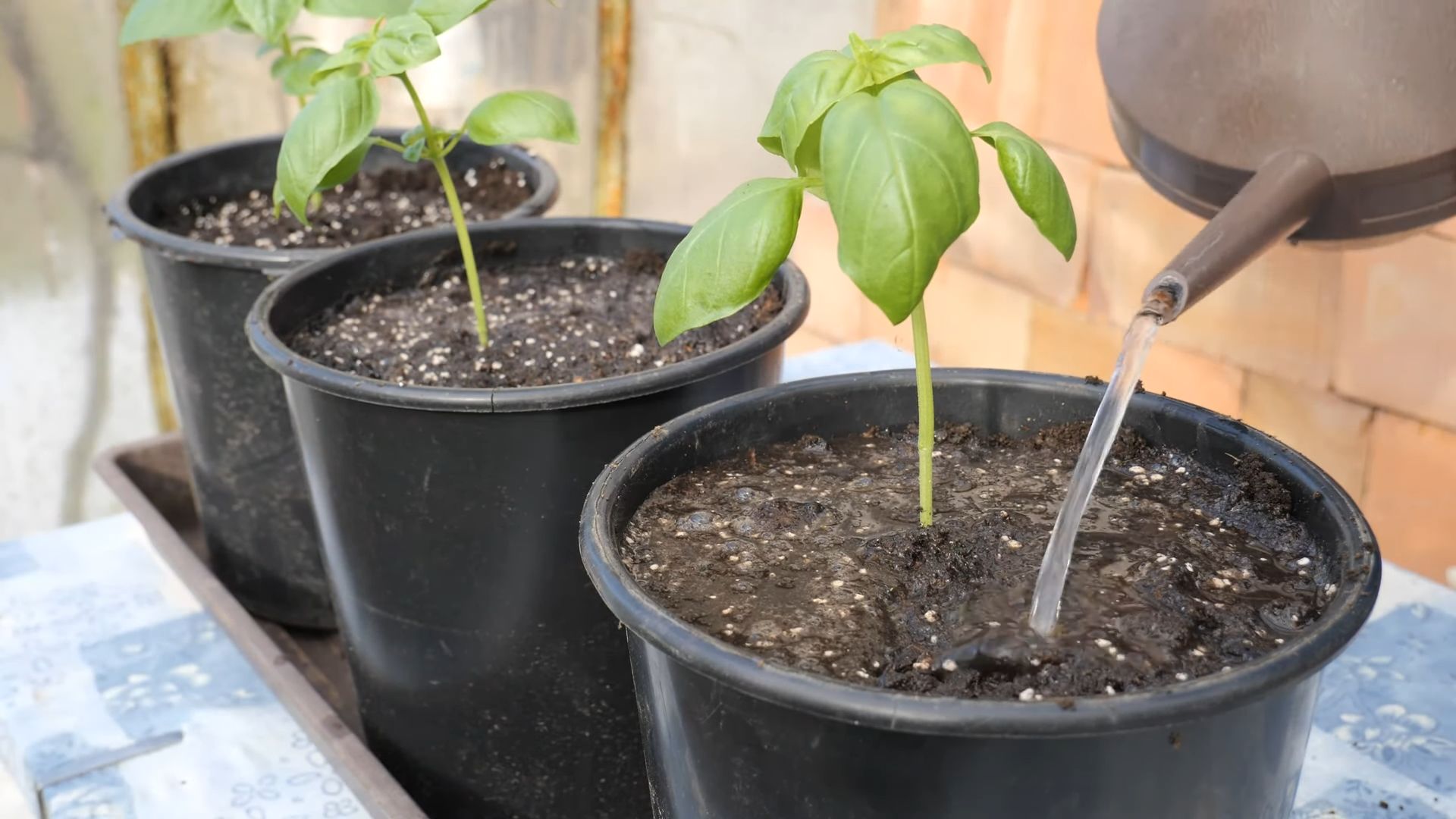
Conclusion
So there you have it – a comprehensive guide to growing your own basil from seed! This simple yet rewarding DIY trick offers a plethora of benefits, far surpassing the convenience of buying pre-grown plants. Not only will you save money in the long run, but you’ll also be able to enjoy the freshest, most flavorful basil imaginable, harvested directly from your own garden or windowsill. The satisfaction of nurturing a tiny seed into a vibrant basil plant, bursting with fragrant leaves, is unparalleled. This method allows for complete control over the growing process, ensuring you get exactly the type of basil you desire – whether it’s the classic Genovese, the spicy Thai basil, or the lemon-scented variety. The process itself is surprisingly straightforward, making it accessible to even the most novice gardeners. Beyond the immediate gratification of fresh basil, you’ll also be contributing to a more sustainable lifestyle by reducing your reliance on commercially grown produce. This DIY approach empowers you to connect with nature and appreciate the simple joys of growing your own food. Don’t just take our word for it – try it yourself! You might be surprised at how easy and rewarding it is to grow basil from seed.
We encourage you to experiment with different types of basil seeds and growing techniques. Try starting your seeds indoors under grow lights for an earlier harvest, or sow them directly outdoors once the danger of frost has passed. You can also explore companion planting, growing basil alongside tomatoes or other vegetables to enhance their growth and flavor. Consider using different types of containers – from small pots to larger raised beds – to suit your space and preferences. The possibilities are endless! Once you’ve successfully grown your own basil, share your experience with us! We’d love to see pictures of your thriving basil plants and hear about your successes (and any challenges you might have encountered along the way). Use the hashtag #GrowBasilFromSeed on social media to connect with other basil enthusiasts and share your tips and tricks. Let’s build a community of home gardeners, celebrating the simple joy of growing our own delicious herbs. Remember, the journey of growing basil from seed is as rewarding as the delicious results. So, grab some seeds, get your hands dirty, and embark on this fulfilling gardening adventure! You won’t regret it.
Frequently Asked Questions
What type of soil is best for growing basil from seed?
Basil thrives in well-draining soil that is rich in organic matter. A good quality potting mix, amended with compost, is ideal. Ensure the soil is loose and airy to allow for proper root development. Avoid heavy clay soils, which can retain too much moisture and lead to root rot.
How much sunlight does basil need?
Basil is a sun-loving plant and requires at least six to eight hours of direct sunlight per day to thrive. If you’re growing basil indoors, place it near a sunny window or supplement with grow lights to ensure it receives adequate light.
How often should I water my basil plants?
Water your basil plants regularly, keeping the soil consistently moist but not soggy. Allow the top inch or two of soil to dry out slightly between waterings. Overwatering can lead to root rot, while underwatering can cause wilting and stunted growth. Adjust your watering frequency based on the weather conditions and the size of your container.
When can I harvest my basil?
You can begin harvesting basil once the plants have developed several sets of leaves, typically around 6-8 weeks after sowing. Pinch or cut the leaves just above a set of leaf nodes to encourage bushier growth. Harvest regularly to promote continuous growth and prevent the plant from flowering.
What are some common problems when growing basil from seed and how can I solve them?
Some common problems include damping-off (a fungal disease affecting seedlings), pests (like aphids or whiteflies), and nutrient deficiencies. Damping-off can be prevented by using sterile soil and avoiding overwatering. Pests can be controlled using insecticidal soap or neem oil. Nutrient deficiencies can be addressed by using a balanced fertilizer specifically formulated for herbs.
Can I grow basil from seed outdoors?
Absolutely! Once the danger of frost has passed and the soil has warmed up, you can directly sow basil seeds outdoors. Choose a sunny location with well-drained soil. You can also start seeds indoors several weeks before the last expected frost and transplant them outdoors once the weather is warmer.
What are the benefits of growing my own basil compared to buying it from the store?
Growing your own basil offers several advantages. You’ll have access to incredibly fresh, flavorful basil at your fingertips. You’ll also save money in the long run, as basil plants can produce a significant amount of leaves. Plus, there’s the immense satisfaction of nurturing a plant from seed to harvest!
My basil plants are flowering. What should I do?
While basil flowers are pretty, they signal the end of the plant’s prime leaf production. To encourage more leaf growth, pinch off the flower buds as soon as you see them. This redirects the plant’s energy towards leaf production instead of flower development. You can also harvest the flowers and use them in culinary creations.
How do I store my harvested basil?
Fresh basil can be stored in the refrigerator for several days if wrapped in a damp paper towel and placed in a plastic bag. You can also freeze basil by blanching the leaves briefly and then storing them in freezer bags. Another option is to make basil pesto and freeze it for later use.
What if my basil seedlings don’t germinate?
Several factors can affect germination. Ensure you are using fresh seeds and planting them at the correct depth. Maintain consistent moisture and warmth. If your seeds still don’t germinate, try using a different batch of seeds or checking your soil conditions. Sometimes, even with the best care, seeds simply won’t germinate.


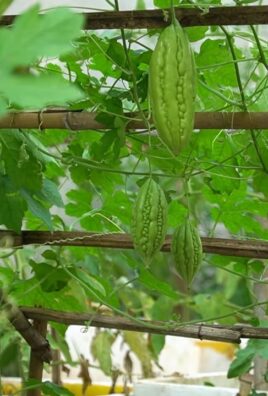
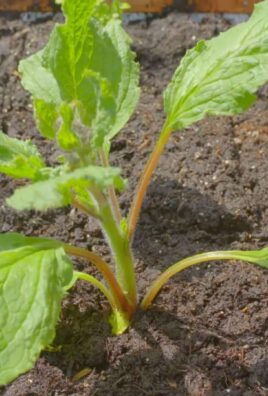
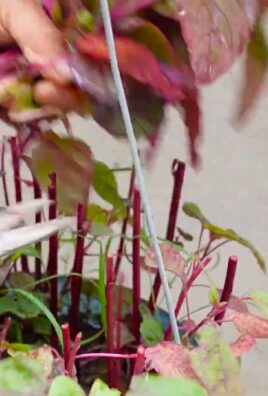
Leave a Comment